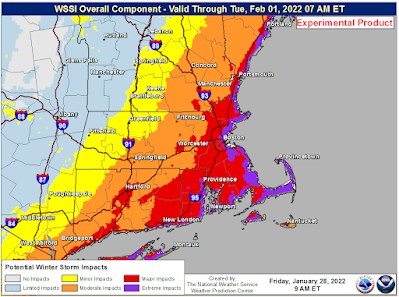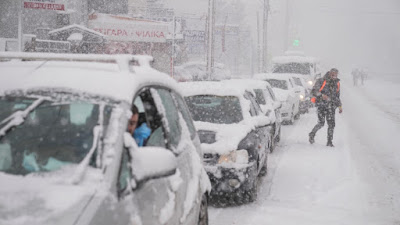Different places will enjoy different types of icky or even dangerous weather at different times this week as the storm progresses. This will cover a really big area for a single winter storm.
But, beginning today, we'll see a progression of snow, rain, ice and even fires as we go through the week.
Vermont's turn comes late Wednesday into Friday, but the only certainty in the forecast for the Green Mountain State is there won't be any wildfires or forest fires. More on Vermont's fate in a bit.
First, let's look at what's going on elsewhere and set things up.
The weirdest part of all this today takes place in Nebraska and South Dakota. Ahead of a cold front that will play a critical role in this storm, warm dry winds will blow over the two states. They've had an odd lack of snow cover out there, so it's actually quite dry.
Despite it being the dead of winter in the northern and central Plains the dry, warm winds have that region in a high rangeland fire risk today. I've seen this sort of thing in the southern Plains in the winter, but not this far north. Very, very strange.
By tomorrow, the cold front will extend roughly from Michigan to Texas. By then, the front will start to pick up a lot of moisture from the Gulf of Mexico as Arctic air plunges south into Texas.
The increasing moisture will go up and over the cold air, squeezing out a bunch of snow and ice. Winter storm watches already extend from Colorado and Kansas into Michigan.
The cold front will slowly move eastward, then kind of temporarily stall along the Appalachian Mountains by Thursday. Waves of low pressure will move northeastward along the front as it ever so slowly presses toward the southeast later Thursday and Friday.
This will ensure a long band of heavy snow and ice and rain from the Gulf Coast all the way up through New England and into southeastern Canada. Large swaths of the nation will see rather heavy snow and areas of freezing rain also slowly press east.
Out ahead of the front, warmer air and rain could create pockets of flooding in the Tennessee Valley. And if the front stays hung up in northern or central New England, parts of the region closer to the coast that had the blizzard Saturday could be dealing with some flooding, too.
VERMONT IMPACT UPDATE
What happens to us with this system is still depending upon where the cold front slows down or stalls.
If current projections are wrong on the position of the front by as little as 50 miles, what I'm about to outline goes out the window. It would be wrong. So stay tuned for changes.
Vermont will squeeze out one thawing afternoon Wednesday ahead of the cold front. A thaw has been a precious rarity through January, so this will be a switch. Don't get used to it though. It won't last.
The front is now expected to stall in central New England which would set most of Vermont up for snow Thursday and Thursday night, with a greater chance of a mix or rain in the southern half of the state.
Since there's so much moisture to work with, whatever falls could be on the heavy side. That means parts of Vermont could get a lot of snow. We're just not sure which parts yet.
The snow or rain will start in lightly Wednesday night and early Thursday before changing to snow during the day from north to south and becoming heavier. At this point it looks like it would be a wet, sticky snow, then turn powdery later on in the event.
This would be an ugly scenario on the roads. The wet pavement would freeze, then wet snow will compact into a thick layer of ice and freeze even harder as temperatures drop. Then snow would pile up on top of all that. A real mess.
So this storm bears watching.
I almost guarantee the storm won't play out exactly as I described above. It could be colder, and there could be less snow if the front positions itself further south. Or there could be more rain or freezing rain if things set up a little further north than people are expecting now.
For what it's worth, the American computer model, which has been more accurate than the European model, has pushed some hints that northern Vermont might largely miss out on precipitation again. That's just one model run, though, so definitely don't hang your hat on that.
The bottom line is to expect a mess Thursday and Friday, but I can't detail yet what kind of mess it will be.























